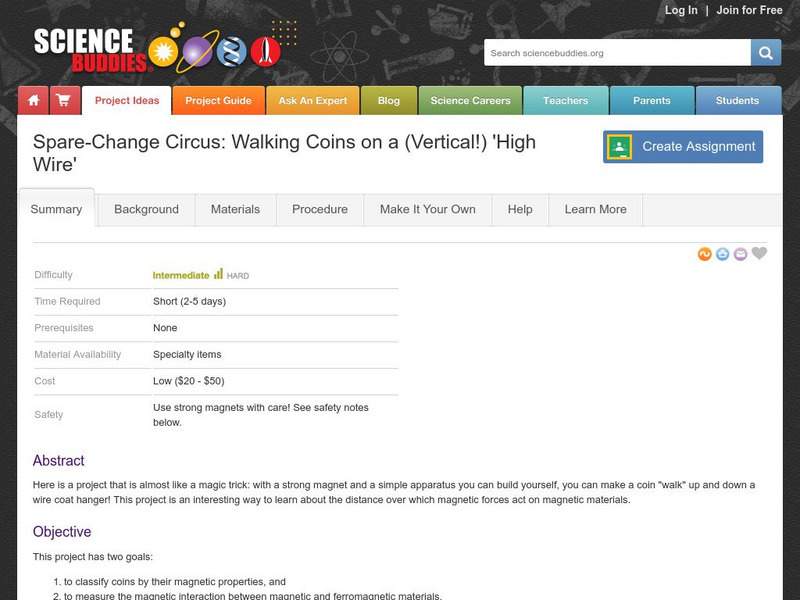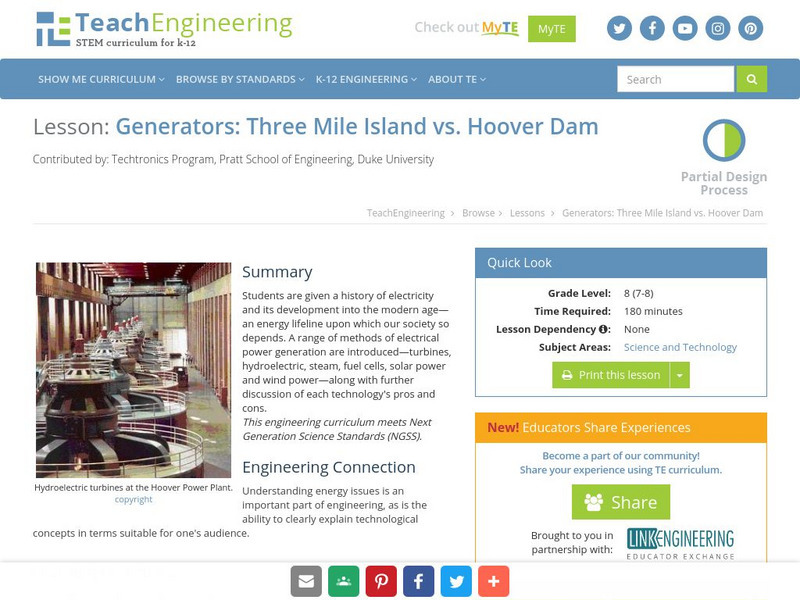National High Magnetic Field Laboratory
Magnet Academy: Barlow's Wheel
English mathematician Peter Barlow devised an instrument in 1822 that built on advances from earlier in the century (including the invention the battery) to create a very early kind of electric motor.
National High Magnetic Field Laboratory
Magnet Academy: Felix Bloch (1905 1983)
Physicist Felix Bloch developed a non-destructive technique for precisely observing and measuring the magnetic properties of nuclear particles. He called his technique "nuclear induction," but nuclear magnetic resonance (NMR) soon became...
National High Magnetic Field Laboratory
Magnet Academy: Paul Lauterbur
Chemist Paul Lauterbur pioneered the use of nuclear magnetic resonance (NMR) for medical imaging. He developed a technique, now known as magnetic resonance imaging (MRI), in the early 1970s that involves the introduction of gradients in...
National High Magnetic Field Laboratory
Magnet Academy: Zeeman Effect 1896
Most of us have seen the rainbow-hued breakdown of the composition of light. Light is of course a form of energy. A magnetic field changes the behavior of light- a phenomenon known as the Zeeman effect.
CK-12 Foundation
Ck 12: Physics Simulation: Electric Motor
[Free Registration/Login Required] Learn how magnetic forces acting on current-carrying wires can be used to drive an electric motor using this interactive simulation. A PDF worksheet and a video tutorial are also available. [2:47]
Science and Mathematics Initiative for Learning Enhancement (SMILE)
Smile: Electromagnets
This lesson plan contains several activities designed to help the student understand the magnetic effects of an electrical current.
National High Magnetic Field Laboratory
Magnet Academy: Wheatstone Bridge 1843
Read about the device used for measuring resistance in a circuit which was discovered in 1843, but had been invented a decade earlier. The inventor's name was not Wheatstone.
Physics Aviary
Physics Aviary: Practice Problems: Mass and Speed of a Particle
Determine the mass and speed of a particle being fired through variable magnetic and electric fields. This problem is done after students determine the charge of an electron using the Millikan Oil Drop Experiment.
National High Magnetic Field Laboratory
Magnet Academy: Alternating Current
Alternating current behaves differently, depending on what components are in a circuit.
Exploratorium
Exploratorium: Science Snacks: Magnetic Suction
An experiment to find out how an old-style doorbell works.
Science Education Resource Center at Carleton College
Serc: Investigating Electricity
In this interactive activity, young scholars will explore electricity and be able to design and create a complete electrical circuit. Students will also learn what is necessary to light a light bulb. Creative thought, ideas, and,...
TeachEngineering
Teach Engineering: Whose Field Line Is It, Anyway?
Students teams each use a bar magnet, sheet of paper and iron shavings to reveal the field lines as they travel around a magnet. They repeat the activity with an electromagnet made by wrapping thin wire around a nail and connecting...
Science Buddies
Science Buddies: Walking Coins on a (Vertical!) 'High Wire'
Here is a project that is almost like a magic trick: with a strong magnet and a simple apparatus you can build yourself, you can make a coin "walk" up and down a wire coat hanger. This project is an interesting way to learn about the...
PBS
Pbs Kids:activities and Videos: Electricity
This PBS site offers videos and activities are hands-on challenges that focus on the engineering design process. They use simple materials, allow for multiple solutions, and are ideal for ages 9-12.
Science Buddies
Science Buddies: Solar Cell Power Output vs. Temperature
Solar cells provide a clean way of making electricity directly from sunlight. In this project you will build a simple circuit and experimental setup to investigate whether the power output of a solar cell changes with ambient temperature.
University of Colorado
University of Colorado: Ph Et Interactive Simulations: Band Structure
Explore the origin of energy bands in crystals of atoms. The structure of these bands determines how materials conduct electricity. Java required.
DOGO Media
Dogo News: Plant Powered Lamps Bring Light to Village in Peru
Read about the amazing development of plant-powered lamps that are bringing electricity to a village in remote Peru. Includes video.
TeachEngineering
Teach Engineering: Generators: Three Mile Island vs. Hoover Dam
Learners are given a history of electricity and its development into the modern age lifeline upon which we so depend. The methods of power generation are introduced, and further discussion of each technology's pros and cons follows.
National High Magnetic Field Laboratory
Magnet Academy: Davenport Motor 1834
Odd though it seems today, when Thomas Davenport was selling one of the first electric motors way back in the 1830s, nobody was buying.
US Energy Information Administration
U.s. Eia Energy Kids: Timelines: Electricity
Timeline of key discoveries and uses of electricity.
Mocomi & Anibrain Digital Technologies
Mocomi: What Is Magnetic Field?
Magnets can be used as toys, tools, and more. Identify how magnets work, what a magnetic field is, as well as what a magnetic force is.
Other
Science Toys: Magnetism
This site describes how to make several toys with magnets. It also gives an explanation of how they work and where to get the right kind of magnets.
Science for Kids
Science Kids: Science Quizzes: Electricity Quiz
A ten-question trivia quiz to check general knowledge about electricity.
Mocomi & Anibrain Digital Technologies
Mocomi: Who Discovered Electricity?
It is shocking to find out what electricity is and who discovered it. Explore this brief history of electricity.
























